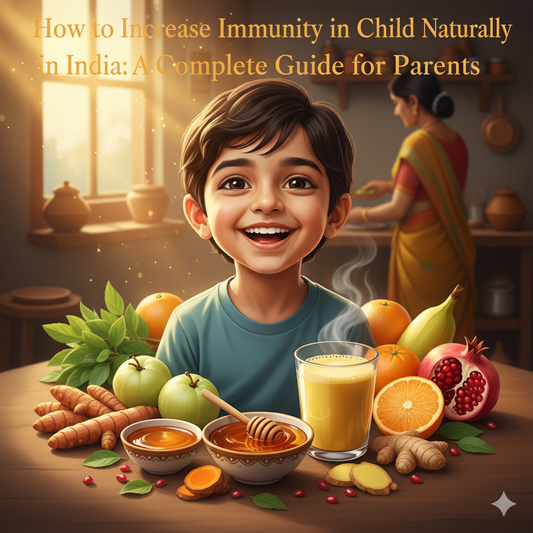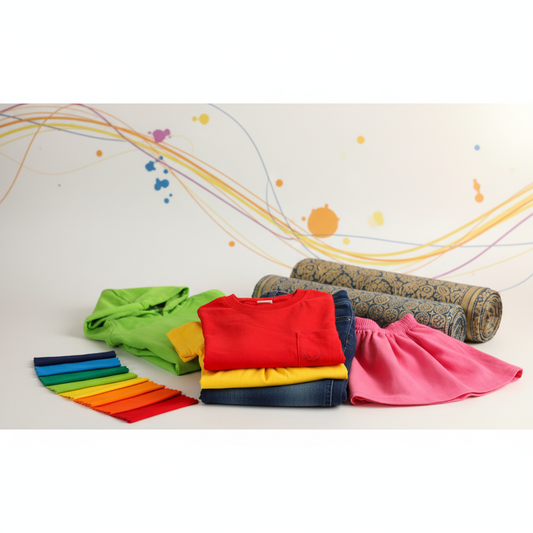
Dermatologist-Approved: The Ultimate Fabric Guide for Babies with Sensitive Skin.
Introduction: Why Your Fabric Choice Matters
As parents, your baby’s comfort is your highest priority. The worry that accompanies a sudden rash, persistent dryness, or an eczema flare-up is universal. While skincare routines are essential, the fabric your baby wears is arguably their most constant point of contact—a second skin that must be chosen with clinical precision.
As manufacturers deeply rooted in Tiruppur's textile expertise, we approach baby clothing with a focus on dermatological health. We understand that in India’s varied and often humid climate, the wrong material can trap heat, hold moisture, and become a breeding ground for irritants. This expert guide details the fibres and finishes you must prioritize to ensure your baby's skin remains protected, breathable, and healthy.
The Science of Softness: Why Baby Skin Reacts Differently
A baby's skin is structurally different from an adult's. Their outer layer, the stratum corneum, is significantly thinner and their skin barrier is still developing. This makes them highly susceptible to two major threats, especially in the Indian climate:
-
Heat and Humidity: Trapped sweat leads to Heat Rash (miliaria), common during humid months.
-
Chemical Irritants: The thinner skin barrier allows chemicals—from dyes, detergents, or fabric treatments—to penetrate and trigger conditions like Contact Dermatitis or exacerbate Eczema (Atopic Dermatitis).
The fundamental rule, therefore, is to choose fabrics that offer superior breathability and are chemically minimal.
The Gold Standard: Pure & Organic Cotton
When managing sensitive skin, 100% Cotton is the safest, most recommended foundation. It is naturally porous, allowing heat and moisture to escape, minimizing the risk of heat rash and sweat irritation.
However, for truly sensitive or eczema-prone babies, we strongly recommend stepping up to Certified Organic Cotton.
-
Purity Over Conventional: Conventional cotton farming uses harsh pesticides that can leave residues in the final fibre. Organic cotton is grown without these toxic chemicals and, crucially, is processed without the use of chemical bleaches, formaldehyde-based resins, or heavy metal dyes commonly used to soften and finish standard textiles.
-
Reduced Allergen Load: By eliminating these harsh processing chemicals, organic cotton dramatically reduces the allergen load, making it hypoallergenic and incredibly gentle for an underdeveloped skin barrier. Always look for GOTS (Global Organic Textile Standard) certification as a mark of verified purity.
Beyond Basic Cotton: The Importance of Finish
Even a 100% cotton label isn't the whole story. As textile experts, we know the manufacturing technique significantly impacts the fabric's softness and longevity.
-
Combed Cotton: Raw cotton contains short, rough fibres. In our manufacturing process, we prioritize Combed Cotton, which involves an extra step of refining the yarn to remove these short, protruding fibres. The result is a thread made only of long, smooth strands. This process creates a fabric that is softer, more durable, and—most importantly for sensitive skin—less abrasive and prone to causing friction or chafing.
-
Azo-Free Dyes: The colour matters. Ensure the brand uses Azo-free, low-impact dyes. These dyes are non-toxic and do not release irritating chemicals when the baby sweats or when the garment is washed repeatedly. Lighter colours are often better, as they require less dye to achieve the final shade.
-
Seamless and Tagless Design: Rough seams and tags are constant mechanical irritants. Therapeutic clothing should feature flat-locked seams and printed (or completely absent) tags to reduce friction that can cause eczema flare-ups around the neck, back, and waist.
Fabrics to Approach with Caution
While cotton is the champion, a few other fabrics require mindful use:
| Fabric Type | Risk for Sensitive Skin in India | Dermatological Advice |
| Synthetics (Polyester/Nylon) | Non-breathable. Traps sweat and heat, leading to heat rash and bacterial growth. | Limit use. Avoid wearing directly against the skin, especially in warm or humid weather. |
| Wool | Coarse, scaly fibres cause mechanical irritation and scratching, which breaks the skin barrier. | Avoid directly on skin. If needed for layering in extreme cold, use only fine Merino wool as an outer layer over cotton. |
| Bamboo Viscose | Soft and absorbent, but the manufacturing process often uses harsh chemicals (unless it is Certified Organic Lyocell). | Use with caution. Always check certification and ensure it is paired with cotton or TENCEL™. |
The Dermatologist's Checklist for Dressing Your Child
Protecting your baby's delicate skin is a multi-step routine that extends beyond the fabric itself.
-
Wash Before Wear: Always wash new clothing before the first wear to eliminate any lingering manufacturing residue, starch (sizing), or dust.
-
Detergent Choice: Use a fragrance-free, hypoallergenic baby laundry detergent. Harsh detergents and fabric softeners often leave behind chemical residues that trigger contact dermatitis.
-
Correct Fit: Choose clothes that are loose-fitting and non-restrictive. Tight bands around the wrists, ankles, and waist can cause pressure and friction, leading to irritation and blocking essential airflow.
-
Temperature Regulation: Dress in layers of breathable cotton. This allows you to quickly adjust the baby’s temperature, preventing the overheating and sweating that lead to heat rash.
By selecting superior, clean fibres like Certified Organic Cotton and prioritizing thoughtful manufacturing finishes, you are taking the most proactive step in protecting your baby’s sensitive skin, allowing them to grow, play, and explore in comfort.








